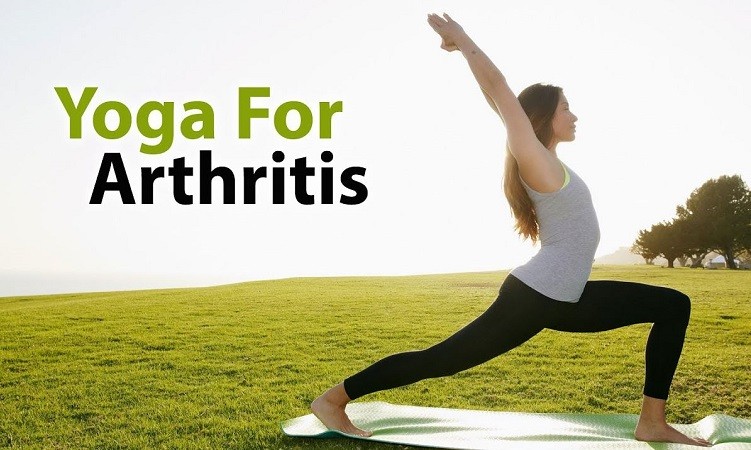
World Arthritis Day, observed on October 12th, serves as a reminder of the global impact of arthritis and the importance of finding effective ways to manage its various forms, including rheumatoid arthritis (RA). RA is a chronic autoimmune disease that primarily affects the joints, causing pain, inflammation, and joint damage. While medical treatment remains the primary approach for managing RA, complementary therapies, such as yoga, have gained recognition for their potential to alleviate RA symptoms and improve the quality of life for those living with this condition. In this article, we will explore the role of yoga in managing rheumatoid arthritis on World Arthritis Day 2023.
Understanding Rheumatoid Arthritis
Rheumatoid arthritis is a complex autoimmune disorder where the body's immune system mistakenly attacks the synovium—the lining of the membranes that surround the joints. This immune response leads to chronic inflammation, which, over time, can damage the joint and surrounding tissues. RA primarily affects the small joints of the hands and feet but can also involve other joints throughout the body. Symptoms include joint pain, stiffness, swelling, and reduced range of motion, which can severely impact a person's daily life.
Medical Management of RA
Medical management of rheumatoid arthritis typically involves a combination of medications and therapies, including disease-modifying antirheumatic drugs (DMARDs), biologics, and non-steroidal anti-inflammatory drugs (NSAIDs). While these treatments can help reduce inflammation and slow down joint damage, they may not completely eliminate the pain and discomfort associated with RA. This is where complementary therapies like yoga come into play.
The Role of Yoga in RA Management
Yoga is an ancient practice that combines physical postures, breathing exercises, meditation, and mindfulness techniques. It is known for its potential to improve flexibility, strength, and mental well-being. Here's how yoga can be used effectively to manage rheumatoid arthritis:
Improved Joint Flexibility: Yoga postures gently stretch and strengthen muscles and joints, enhancing flexibility. These movements can be adapted to accommodate the specific needs and limitations of individuals with RA, making it a safe way to improve joint mobility.
Pain Management: Yoga's mind-body approach can help individuals manage pain by increasing body awareness and promoting relaxation. The deep breathing techniques and meditation practices can reduce stress, which can exacerbate RA symptoms.
Also Read:
Strengthening Muscles: By engaging in yoga regularly, individuals with RA can strengthen the muscles around affected joints. Stronger muscles can provide better support for the joints and reduce the strain on them.
Balance and Coordination: Yoga helps improve balance and coordination, which can be particularly beneficial for individuals with RA who may experience joint instability. Enhanced balance can reduce the risk of falls and injuries.
Stress Reduction: Living with a chronic condition like RA can be emotionally challenging. Yoga's focus on mindfulness and relaxation can help manage stress, anxiety, and depression, improving the overall quality of life.
Social Support: Participating in yoga classes can provide a sense of community and support, allowing individuals with RA to connect with others who share similar challenges.
Considerations and Precautions
Before beginning a yoga practice to manage RA, it is essential to consult with a healthcare professional. They can provide personalized advice and help determine the suitability of yoga based on the severity of the condition and the individual's overall health.
Individuals with RA should also keep the following in mind when practicing yoga:
Choose a Qualified Instructor: Seek out a qualified and experienced yoga instructor who is knowledgeable about adapting poses for people with RA.
Start Slowly: Begin with gentle and modified yoga poses, gradually progressing as your body becomes more comfortable and flexible.
Listen to Your Body: Pay close attention to your body's signals. If a pose causes pain or discomfort, modify or skip it.
Communicate with Your Instructor: Inform your instructor about your RA diagnosis and any specific limitations or concerns you may have.
Also Read:
On World Arthritis Day 2023, we recognize the importance of effective rheumatoid arthritis management, which involves not only medical treatments but also complementary therapies like yoga. When practiced mindfully and with the guidance of a qualified instructor, yoga can be a valuable tool in improving joint flexibility, managing pain, and enhancing overall well-being for individuals living with RA. While it may not be a standalone treatment, yoga can be a significant part of a holistic approach to rheumatoid arthritis management, contributing to a better quality of life for those affected by this chronic condition.
Also Read: